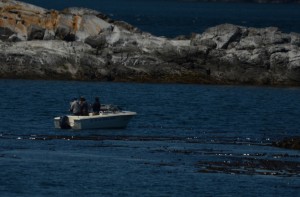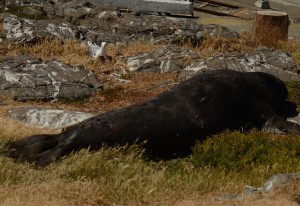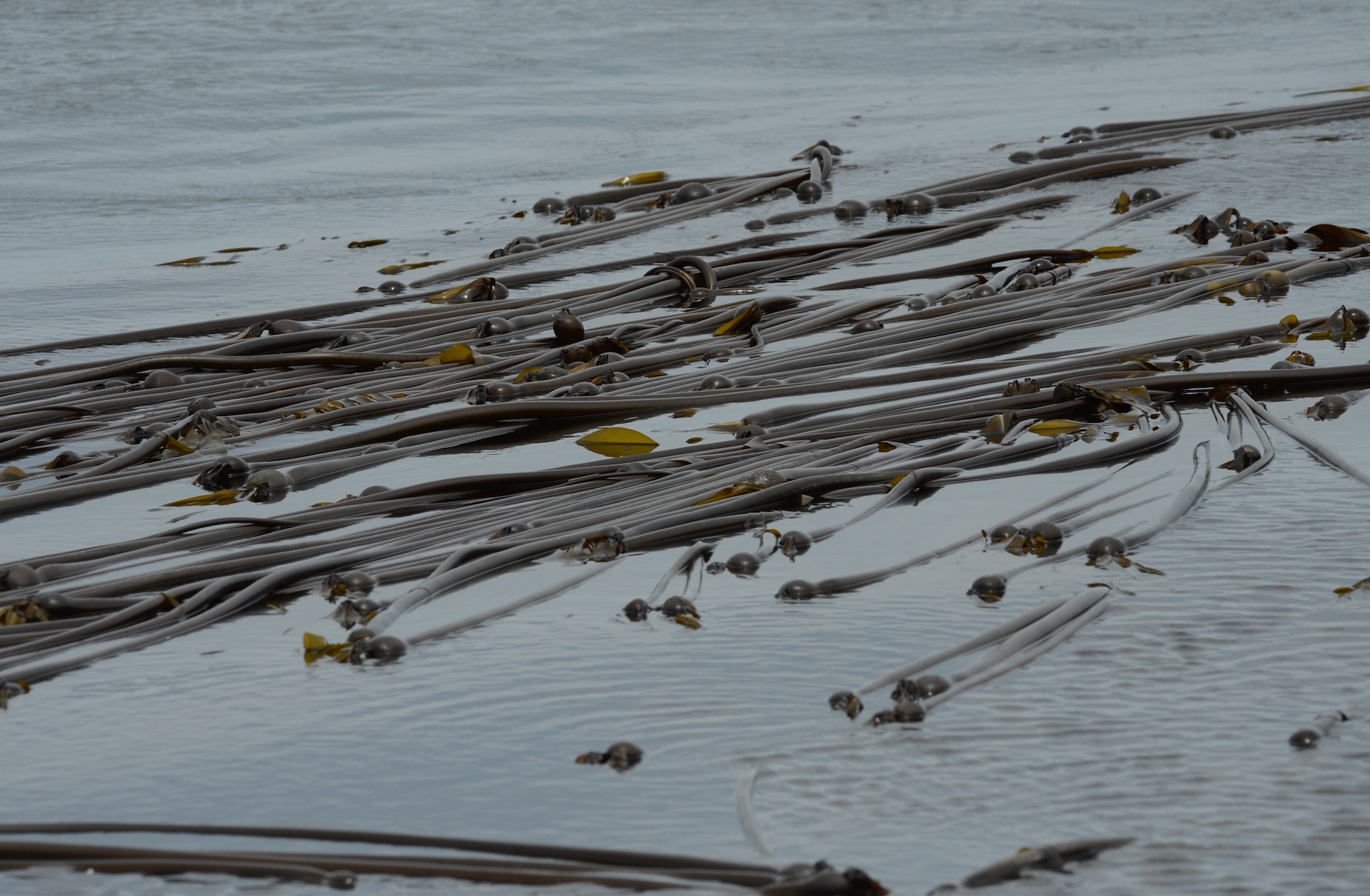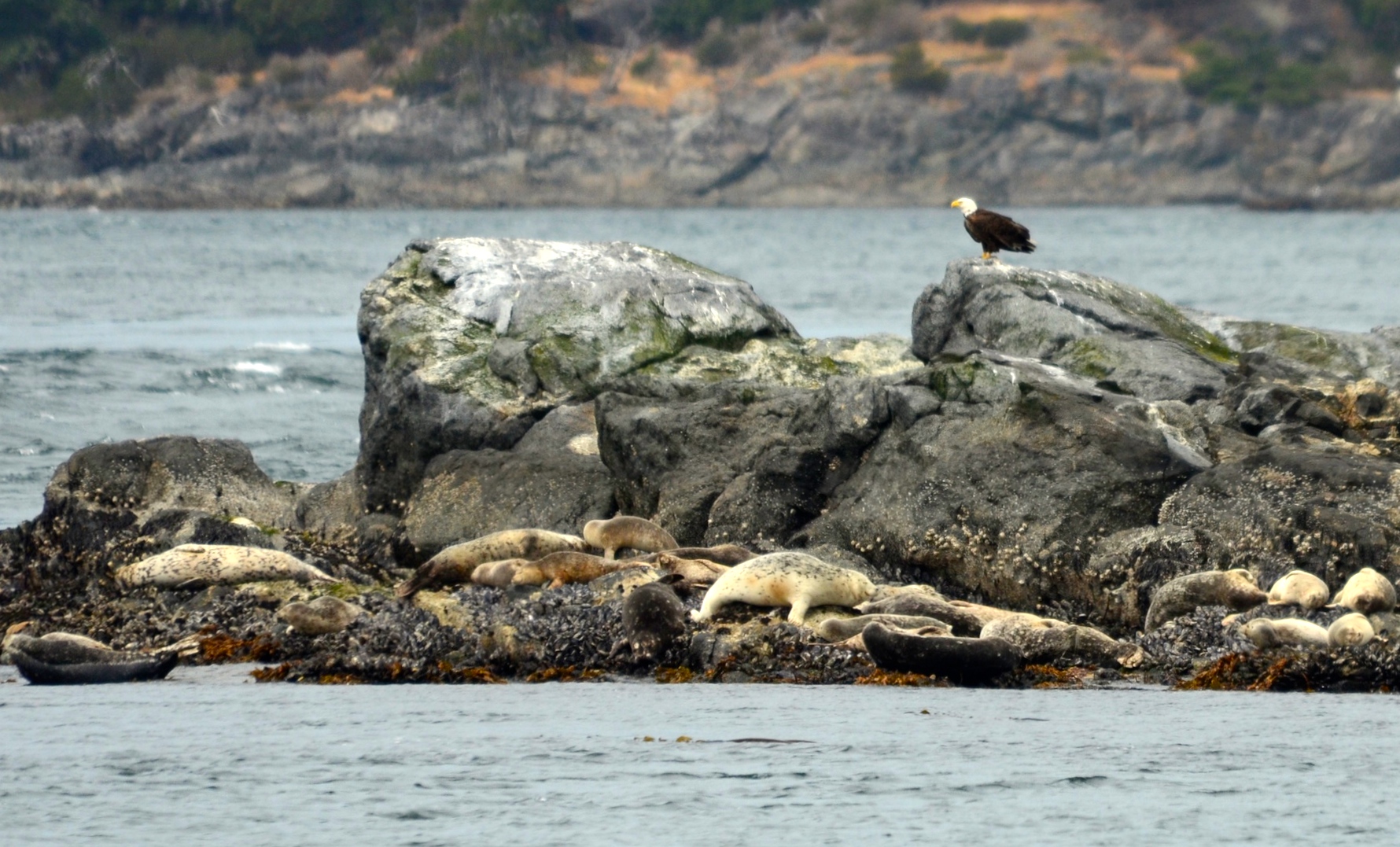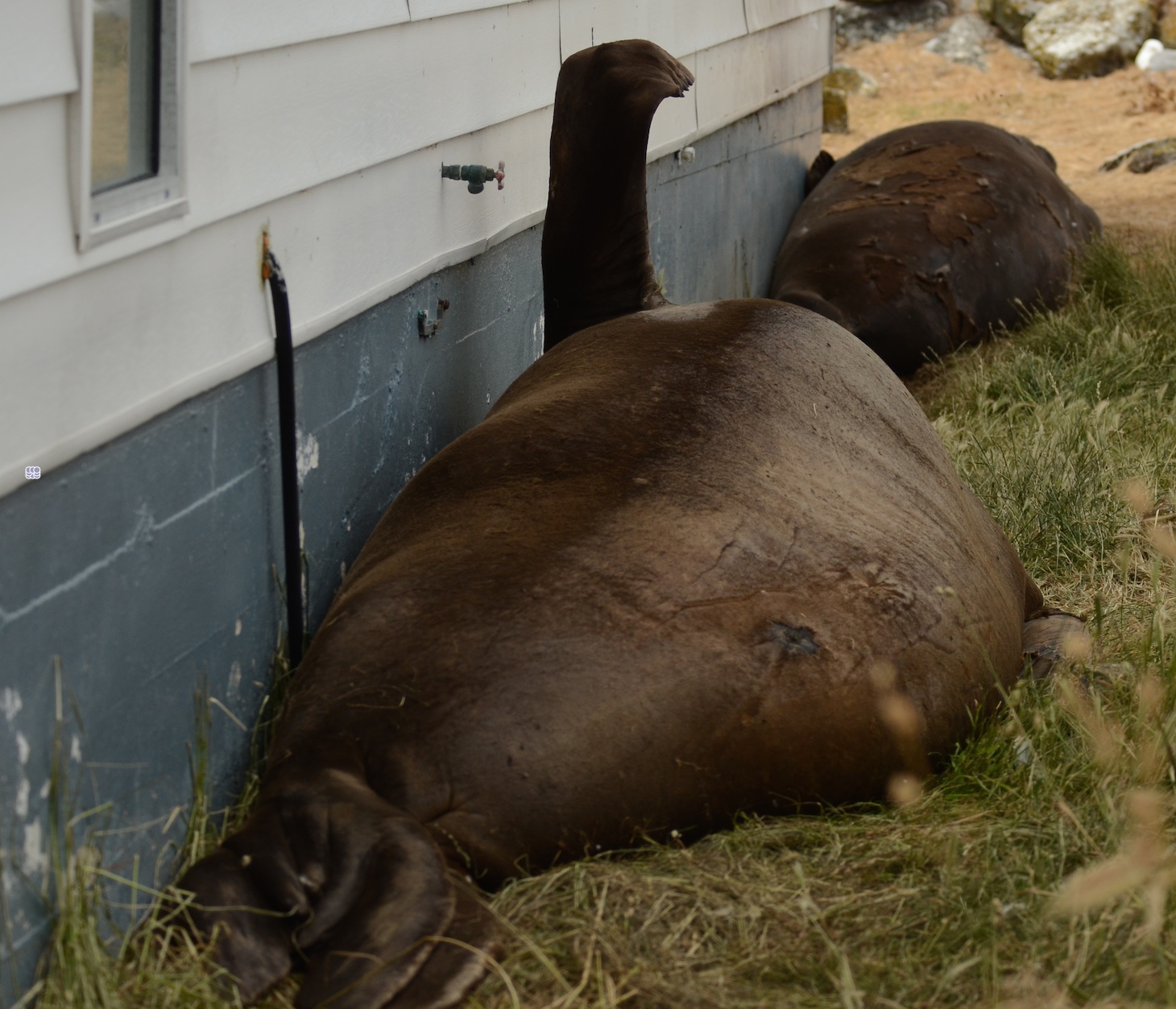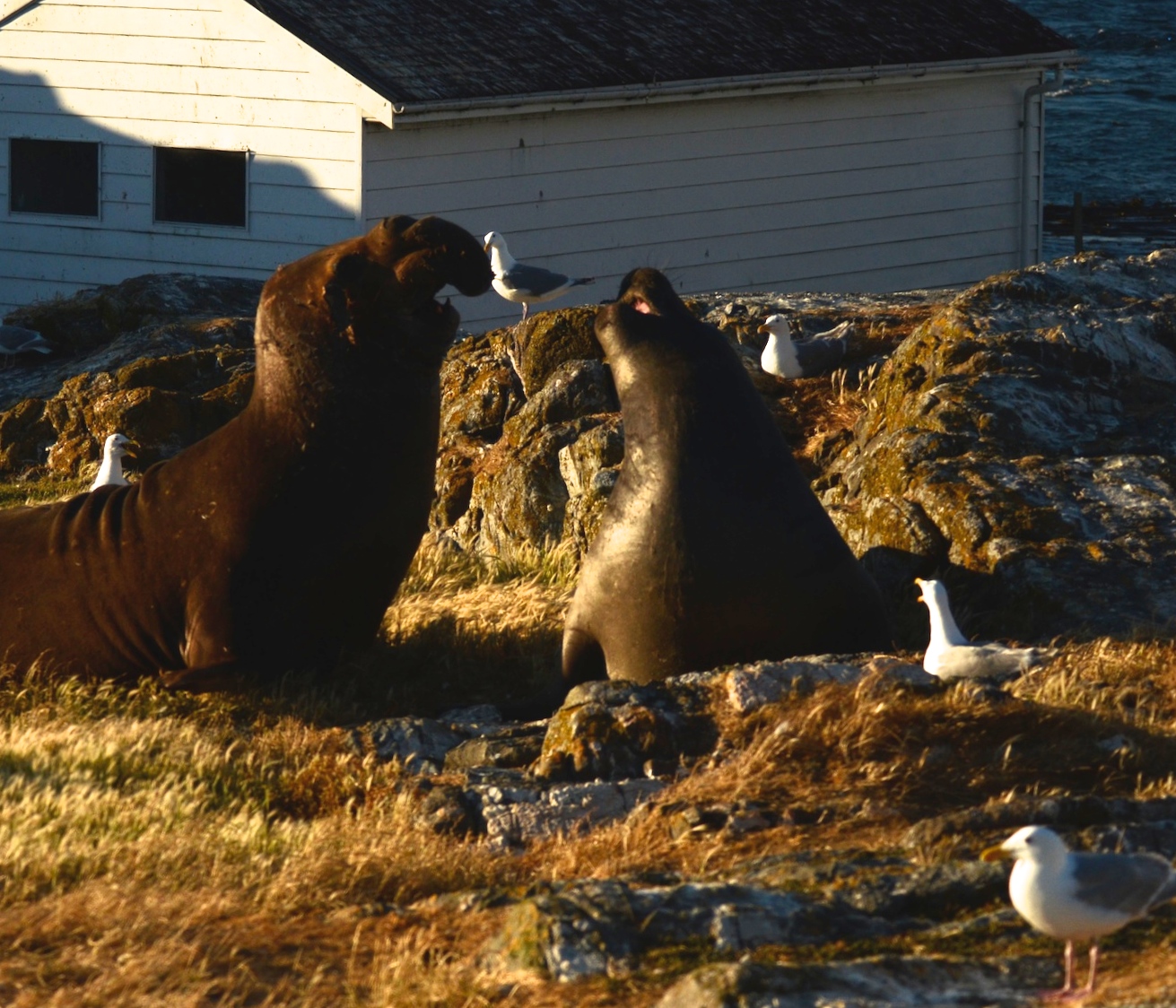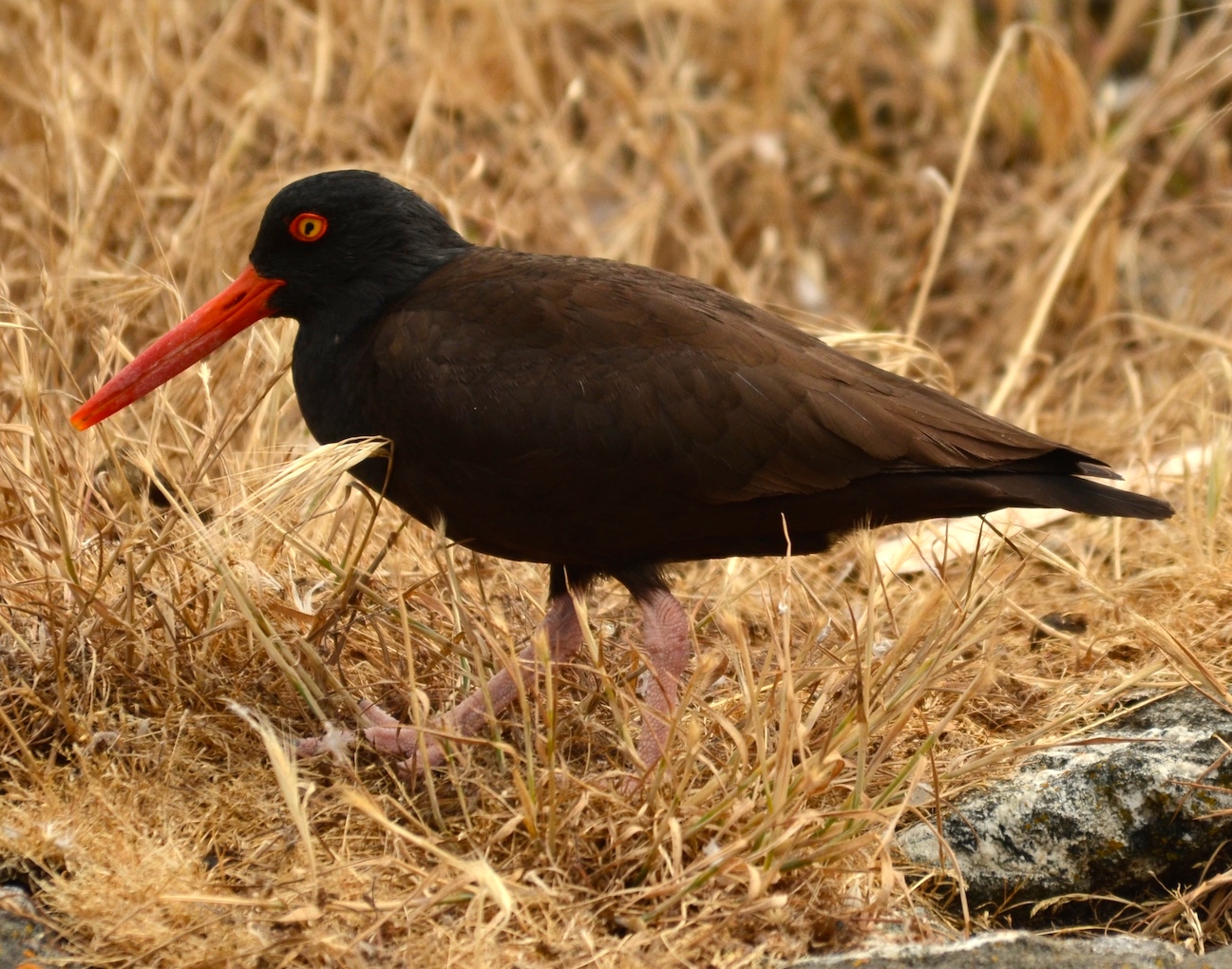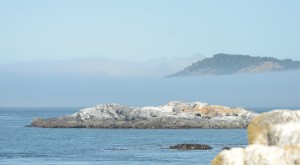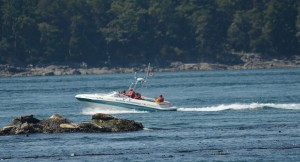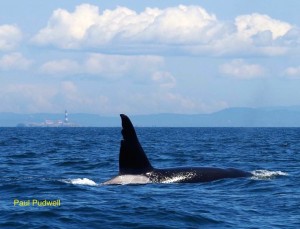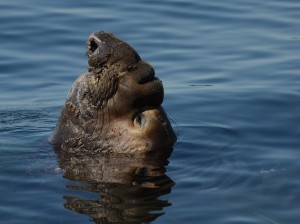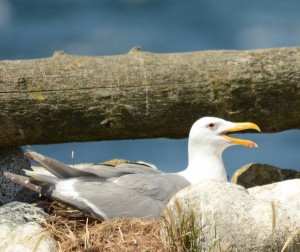The wind was slow and relaxed most of today at Race Rocks. In the morning, it blew 5 – 10 knots east and in the afternoon it turned to south/southeast and blew just enough to make the flag look good. The outflow wind pushed out the fog that had formed early to the west. Eventually the wind backed around through south, southwest and over to west. At the end of the day it was blowing west 20 to 25 knots and a strong wind warning is part of the forecast along with a mix of sun and cloud, mostly cloudy with fog banks in the morning.
The sky was clear all day today and with the clarity, cloud formation on the Cascade and Olympic Mountains ranges was visible. Mount Baker stood like an eastern sentinel and Bahokas Peak was visible, low, like a distant lookout, at the far southwestern entrance to the Strait of Juan de Fuca.
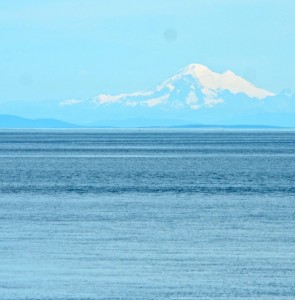
Mt. Baker to the east.
Today, the barometer continued the slide it started on Friday and ended up just above 1010 hPA. in the late afternoon. With the still wind and intense sunshine came higher temperatures. The high today of 18o C is a big jump up from the week’s average of 13.9 o C to Saturday and from the overnight low of 10.5 o C. That was sea surface temperature yesterday 10.5 o C.
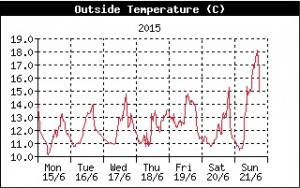
Outside air temperature at Race Rocks for last week.
There was very little whale watching activity today with only one vessel observed working in the Ecological Reserve. There were quite a few sports fishing vessels in reserve including rentals, charters and individual fishers. Two boats were observed fishing for rockfish in the closed Rockfish Conservation Area, within in the Ecological Reserve. Most people respect the closure and this is how the area has a chance to rebuild and start to contribute juvenile fish to adjacent areas.
Today is national aboriginal day and I would like to honour the First Nations within whose territories Race Rocks lies today. I would also like to draw attention to the stone cairns on the island, which date back to ~500AD. These cairns are a testament to a long and storied history that has been too often down-played or downright ignored, by Euro-Canadian historians. https://www.racerocks.ca/history-of-race-rocks/first-nations-burial-cairns-at-great-race-rocks/
Ecologically we are moving into summer and these lovely long days are important markers of biological activity. Most of nesting gulls are incubating and almost all the nests I have had a peek at, have three eggs. This island is an ideal location for nesting studies as the light tower offers an incomparable 360-degree view. Observational activity from that height does not disturb the nesting birds.
Seasonal timing is important and gull and oystercatcher chicks should start hatching out in a couple of weeks. It is trickiernow to pinpoint what is going on with the Pigeon Guillemots and easier later, once they start to carry fish to their chicks. The early nesters (Canada Geese) have young almost full size now and their numbers have dropped again. There are only two pairs of adults left; one pair with five goslings and the other with three. An adult Bald Eagle was hunting here today.
In the water around Race Rocks, at least three species of salmon are passing by (Chinook, Coho and Sockeye) and halibut have moved into the relatively shallow waters outside the reserve. At the surface, mixed species, feeding flocks are starting to form, driven from below by diving birds such as Rhinoceros Auklets. That is where the juvenile gulls seem to be feeding. The sea lions have all gone now and pregnant Harbour Seals are starting to look very round. Just Chunk and Floyd remain in the elephant seal department and they were both sleeping up against the back of the science house most of the day.
I went ashore briefly today and was back by breakfast. There were no visitors and chores were routine today.

